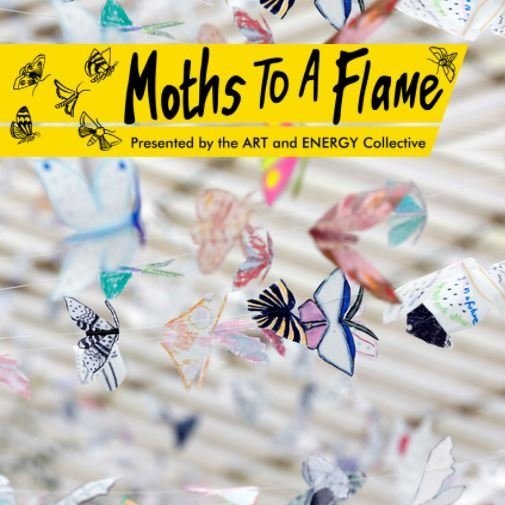Why make it playful? by Naomi Wright
Read one of Naomi’s thought pieces from our final Moths to a Flame publication.
While being creative, we explore and investigate things. It doesn’t feel like work. We are not being told what to do. Is this our inner child at play? Is our creativity about playing – I say it is.
Both animals and humans play, a reminder that we exist in nature’s continuum. We have evolved in play. So, play is in our blood! Our freedom to play has given us an opportunity to understand ourselves, our choices, gain knowledge, value the places we live. I think we all need this freedom.
“Ritual grew up in play; poetry was born in play and nourished in play; music and dancing were pure play...it arises in play and never leaves it.”
Some professionals study children’s play, and how we continue to play as adults. The Theory of Loose Parts (by Simon Nicholson in 1972) suggests that the greater the variety of play opportunities offered the more creative responses we have. It is akin to inviting people to a beach – everyone, no matter background, finds a way to play on a beach. The flotsam, stones, water, sand, seaweed and underwater creatures, the opportunities for play seem endless in a place with loose parts.
Moths to a Flame is poetic, our project was ‘born in play’. From that beginning we offered a wide raft of playful opportunities or loose parts, and with them, the range and number of people who joined in increased. We initiated a richer, much deeper and more meaningful conversation through play.
Artists, Helen and Norman Harrison reflect on the role of creativity in conversation, they called it Conversation Drift. ‘ … offer the opportunity to create new spaces, first in the mind and then in everyday life’ (see their manifesto of Force Majeure for 2021). We created a great variety of spaces for people to imagine a different future and then talk about it.
Our playful approach in Moths to a Flame, was guided by nature, provided those loose parts, was accessible, attracted people that think themselves creative, and those that don’t. It also included play as Conversation Drift; this sometimes-synchronistic project flow is described by Rebecca Solnit in her book, A Field Guide To Getting Lost:
“Leave the door open for the unknown, the door into the dark. That’s where the most important things come from, where you yourself come from, and where you will go.”
Moths to a Flame has reinforced my sense that play entangles us in our aesthetic, social and ecological journey through life. If we make it playful there is a chance that the experience, the fun and the unexpected, has got us all thinking, and, potentially, may influence how we live. In the face of the climate emergency, when behaviour change is the only way we might make enough of a difference for a future healthy environment, we need to play.
Alan Kaprow, an artist from the ‘60s, who created ‘happenings’ with other people, said on his art as play:
“It is art but seems closer to life. I play games; if I called them sermons then nobody would play. Not even I.”
Naomi's work has always incorporated play and has connected her with various play agencies such as Play Torbay. Her research using outdoor play as art and research has been recognised as innovative.
This thought piece has been taking from our final Moths to a Flame publication, available to purchase via the link on this page or in our online shop.
All purchases support the work of The Art and Energy Collective - thank you.







